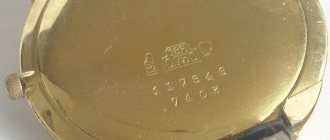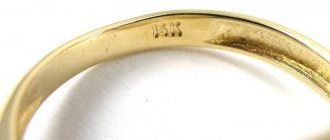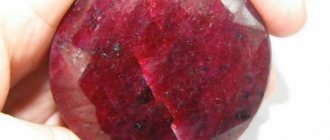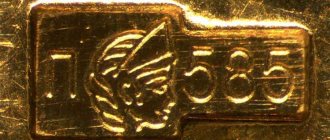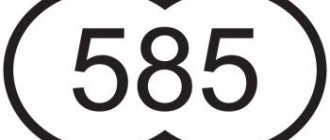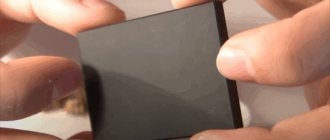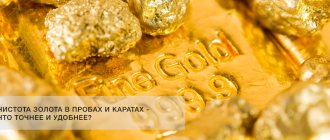In ancient times, grains of various plants were mainly used as units of mass for jewelry. Today we use more convenient designations, but even the word “carat” comes from the name of the carob tree, the seeds of which also served to determine the value of a stone or pearl.
♥ ON THE TOPIC: BelAZ-75710: 1,300 liters of fuel per 100 km and other 7 facts about the best dump truck in the world from Belarus.
What is a carat?
So, there is an international treaty called the Meter Convention, which has now been signed by 55 industrialized and trading nations. This agreement ensures the constancy and unity of measurement standards, including the carat, as a unit of measurement for the mass of a precious stone or pearl.
♥ ON THE TOPIC: BelAZ-75710: 1,300 liters of fuel per 100 km and other 7 facts about the best dump truck in the world from Belarus.
Measuring weight at different times
The gram, as a unit of weight, appeared much later than the carat and grain. The first equal-arm scales were used 2.5 thousand years BC. e. in Ancient Babylon.
The theory of scales, in which a load could be balanced by a movable weight, was described by Aristotle, that is, long before Archimedes and his famous saying about the lever. In modern terms, this sounds like equality of moments of forces.
The comparison of the load on equal-arm scales looked quite obvious and convincing. But when one weight was compared with another on unequal-arm scales, essentially using a ruler, it was too tricky and incomprehensible for ordinary people.
It is not surprising that the person performing such weighing was honored and respected. In ancient Rome, this special person, called libripens, was involved in major trade transactions.
How much does 1 carat weigh when measuring the weight of gemstones?
According to the certificate, the carat weight is equivalent to 200 mg (0.2 grams). Moreover, in most countries (including Russia), the carat cannot have a fractional part, and the weight of the raw material or product is indicated by an integer.
♥ ON THE TOPIC: How brand names appeared: Ikea, Lego, Pepsi, Reebok, Skype, Sony, Canon, Google - 16 stories about the origin of the names of famous companies.
History of weights and measures: how many grams does one carat weigh?
The simplest answer is 0.2. The history of the issue is much more interesting, as a reason to pay tribute to Eastern culture. When creating writing, Europeans avoided a dead end, or at least a very irrational option: when for each new word they need to invent a new hieroglyph.
But with the number system they fell into almost the same trap. Try converting a light year to kilometers using the Roman numeral system. Europeans should be grateful to the Arabs for introducing them to the positional system of number and al-jabra (algebra).
The calculations in such a record turned out to be very convenient, and immediately found supporters, but in the measurement system many anachronisms still exist. Gasoline prices in America are indicated per gallon (3.79 liters), and for many products per pound (about 454 grams).
Exchange trading in gold is carried out in dollars per troy ounce (31.1035 grams). You can go to meters and kilograms from any system and people will easily get used to it, you can divide a day according to the decimal system into other hours and minutes, but you cannot combine a day and a year in such a notation (one year is equal to 365.2422 days).
Obsolete carat
In the literature and scientific works of the past, you can also find the designations “English carat” and “Arabic carat” (also known as “Kirat”).
The English carat (about 205.4 grams) was used in Britain and its colonies until 1888 and was equal to approximately 3,170 troy grains, which in turn was equivalent to the weight of an average grain of barley.
The Arabic carat was defined differently in different countries of the Middle East and Asia. For example, in Egypt and Syria it was about 195 mg, and in Asia Minor - 204 mg.
♥ ON THE TOPIC: 70 interesting facts about IT technologies that you might not know.
How do the mass and diameter of precious gems relate?
The number of carats is also calculated by the size of the crystals in mm. The correctness of the calculation depends on the type of cut and compliance with the technology for its implementation. The mineral is removed from the frame and measured with an electronic caliper or other instrument.
You can determine the carat of a stone using the formulas (size in mm):
- for princess cut - width × length × height × 0.0083;
- round - height × diameter2 × coefficient 0.0061;
- triangle - width × length × height × 0.0057;
- oval - height × diameter2 × 0.0062;
- awning - width × length × height × coefficient (0.00595, 0.00585, 0.00565 or 0.00580);
- heart - width × length × height × 0.0059;
- emerald - width × length × height × coefficient (0.0080, 0.0092, 0.01 or 0.0106);
- drop - width × length × height × coefficient (0.00575, 0.00600, 0.00615).
When calculating the mass of large gems, the formula takes into account not mm, but centimeters. In fact, a 1-carat round diamond is equal to 6.4 mm. In an oval crystal, 1 ct would be 7.5 mm × 5.5 mm. When cutting marquise, one ct corresponds to 10 mm × 5 mm.
Carat in gold
Our compatriots are often confused by the fact that in many Western countries the fineness of gold is measured in carats. Indeed, how can you determine the ratio of metals in a product using a unit of weight?
In fact, it's simple. Just like the usual standard, carat determines the proportion of pure gold in the alloy, or rather, in its 24 weight parts. Converting a sample into carats is quite simple; you just need to multiply the existing value by 24 and then divide by 1000. For example, to convert the 585th sample into carats, we use a simple equation:
X = 24 × 585: 1000 = 14 carats (the 585th hallmark corresponds to 14 carats)
In a similar way, you can convert carats to fineness:
X = 1000 × 18: 24 = 750 hallmark (18 carats corresponds to 750 hallmark).
Weight standards
In ancient times, many Mediterranean countries had their own state weight standard: talent, which translated means weight, scales.
It was also a measure of value, and talent could differ in different countries:
- Babylonian talent, in the form of a bronze lion on a stand - 60.4 kg.
- Phoenician (silver) talent - 43.59 kg.
- Jewish - 44.8 kg.
- Persian gold talent - 25.2 kg, silver talent - 33.65 kg.
An ancient Greek talent of 6,000 drachmas (coin and unit of weight 4.37 grams) weighed 26,196 grams.
Drachmas in different areas were also different:
- Attic
- Corinthian
- Rhodes
- Lydian
These and other silver drachmas differed in weight, but the conversion factor was the same: 1 mina = 100 drachmas, 1 talent = 60 min.
Such weights were well suited for large transactions, but gem dealers needed standards in a completely different weight range and, moreover, they always had to be on hand. It turned out that carob fruits are excellent for this.
They are quite light, and, most importantly, very stable in weight. Thus, the carob pod, with a similar sound in different languages, left for a long time the name of the unit of weight - carat. With this unit of comparison there was the same inconsistency as with others.
The relationship between the weight and size of the stone
There is a misconception that the weight of a gemstone characterizes its size. But the physical and chemical nature of minerals is designed in such a way that different gems of the same weight have different sizes due to different densities. Compared to a diamond, a one-carat sapphire or ruby will be smaller in size, but an emerald will be larger.
Another indicator that determines the size of a stone is its cut. According to this criterion, even diamonds of the same weight differ in size.
These sizes are indicated for cut group A. For other cut groups, sizes may vary slightly.
So, a one-carat diamond will have completely different sizes, depending on the cut:
- Circle. The most popular cut shape. The diameter of this stone is 6.5 mm. Round diamonds, regardless of the number of facets, are the most expensive, since the lion's share of the precious weight is lost during processing.
- "Marquis". A cut that was born thanks to the favorite of the King of France. The diamond, reminiscent of the smile of the Marquise de Pompadour, measures 9.8 * 5.6 mm.
- Square. This shape implies different types of cuts, the most popular of which are “Princess” and “Asscher”. Size – 5.55*5.55 mm.
- Oval. Size – 7.7*5.9 mm. The brilliance of oval diamonds is identical to that of round stones, but the former benefit from their size.
- "Cushion" and "Radiant". Square cut with beveled edges, stone size 6*5.5 mm.
- "Pear". This shape is a tandem of two other shapes – circle and “Marquise”. Size – 8.6*5.8.
- Heart. A cut designed to hide the natural imperfections of a diamond, measuring 6.7*6.5 mm.
- "Baguette". A one-carat stone has a size of 7.7 * 4.5 mm. The brilliance of a piece of this shape outshines the brilliance of round diamonds.
- Emerald. Size – 6.4*4.9 mm. This type of cut is only suitable for flawless stones. Otherwise, this form will highlight all the shortcomings. Emerald shapes shine brighter than round ones, but the latter better convey the play of color.
Also read: Jewelry with Marcasite
Stone sizes
If we talk about the weight of diamonds, then the carat plays a decisive role only in the evaluation of small stones. When determining the cost of large specimens, first of all, they take into account the indicators of purity and color.
Stone purity table
Diamond Color Chart
Ounce
For trading on the stock exchange, the troy ounce is used, which is a fairly accurate measurement. It should not be confused with those previously outlined. A troy ounce corresponds only to pure gold, with a purity level of 999 or higher. It means the weight of the metal, and in accordance with this it helps to find out its price on the world market. By weight it is approximately 31.103 grams. If you purchase investment coins, bars, or a virtual amount of gold through a bank or exchange, you will encounter exactly this value, which is designated as ozt.
Metal and alloys
A very important parameter of the metal is the purity of gold. To be sure of the quality of the metal, you should consider the special markings on the product. It is this parameter that allows you to set the degree of purity of the alloy. One carat here is one part of the pure substance out of 24 in that particular bar, coin or other item.
There are many alloys of gold and this is rather a necessity, because gold itself is a very soft metal, it does not contain a shape and is easily deformed. Over many years of development in jewelry, traditional alloy options have appeared that do not cause allergies in humans, make the metal durable and hold its shape well, and give a beautiful shade. Very often, silver and copper are used for alloys. For non-ferrous metals - snow-white, green, black, rose gold, additional tint additives are also used. To understand how valuable an object made of a precious metal is, you need to know not only its weight and type of gold, but also its fineness, which can be measured in numerical value or carats. The numerical meaning can more accurately describe the percentage of pure gold content (for example, 24 carats is equal to 999 fineness). In the USA, the fineness of gold is usually indicated in carats, while in Europe they prefer metric markings.
What should you pay attention to?
Purchasing gold in karats with a high purity index will be the most sensible investment. If necessary, you can sell a ring or chain at a higher price, since the price of gold has not fallen for many years.
On the other hand, for those who value primarily the aesthetic component, without intending to invest money in jewelry, numerous alloys may be suitable. The use of non-ferrous metal will allow you to create uniquely beautiful floral or fantasy compositions.
The strength of the alloys will allow you to make the finest cuts of the product and decorate it with filigree carvings. Pairing rose or herbal gold with a similar gemstone tone looks quite beautiful. In any case, when purchasing an item from a jeweler, find out about the content of precious metals, the quality of the stones, the percentage of pure gold content, and the components of the alloy. This way you will be sure that you did not make a mistake with your purchase.
Gemstones and their carat weight
Gems. What definition or characterization can be given under these words, which captivate the feelings and emotions of all humanity?
Their brilliance and beauty, the play of light and delightful colors, their magical influence on people force them to perform feats and follies for their sake, and make lapidary masters hone their skills in cutting stones. In the hands of a master, a stone turns into a jewel, because during cutting, the choice is made in favor of the play of color, but at the expense of the weight of the stone. And then it plays with many multi-colored rays and delights with its brilliance and beauty.
The quality of any gemstone is determined by several indicators, but the main ones are four, which in England are called the “4C” indicators. This is “Carat, Colour, Clarity, Cut”, which means “carat weight, color, clarity and cut”.
Now let's focus on determining the mass of a stone in carats. Carat is a constant measure of the mass of gemstones. One carat equals 0.2 grams. Why is that? This is an ancient unit of measurement derived from the mass of the seed of the ceratonia (carob tree) - Greek. kerattion, which over time, one might say, does not change its mass. In ancient times, man noticed this unique property, and, of course, used it to measure the weight of precious stones. There is another assumption that this unit of measurement comes from the word Kuara - from the seed of an African coral tree.
In international trade, carat, gram, gran and momme are used to measure the weight of stones, but mainly the first two units of measurement.
Carat
– in Russian abbreviation – kar, in international – ct, used in jewelry trade. But still, the carat had different values in different trading regions - from 188 to 213 mg. Since 1907, both Europe and America gradually introduced the metric carat (mct), equal to 200 mg or 0.2 g. The weight of gemstones is measured not only in carat units, but also in its fractions, written as simple (1/ 10 ct) or decimals with two decimal places (1.25 ct). The price of a gemstone is calculated in carats.
For gold there is also a concept - carat, but here we are no longer talking about weight, but about the fineness of the metal.
Gram
is also used, but when it comes to the jewelry trade about less valuable precious and semi-precious stones, this is especially true for raw materials.
Grand
– a unit of measurement for the mass of pearls, which is equal to 0.05 g or 1/4 ct. Now this unit of measurement is increasingly being replaced by carats.
Momme is a Japanese unit of measurement for the mass of pearls, which corresponds to 3.75 g or 18.75 ct. It is almost never found in the European pearl trade.
Precious stones are found in the form of amazingly beautiful crystals already in nature, with strong shine and a natural play of light. But man learned to improve this beauty with his skill. The virtues of precious stones, their solemn architecture, their brilliance and radiance are clearly revealed “...after the fusion of stone with craftsmanship...”.


